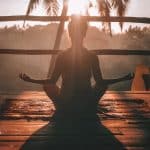Scoliosis, a spine condition characterized by its abnormal, side-to-side curvature, can cause discomfort and pain to those affected. But hope is not lost. Yoga, a holistic practice focusing on the alignment and balance of the body, offers a beneficial approach to managing this condition. Yoga and scoliosis might seem unrelated at first, but they intertwine beautifully as yoga can help alleviate symptoms and improve general health for individuals with scoliosis.
Let’s dive in and explore how to tailor yoga exercises for scoliosis, focusing on spinal alignment, body posture, and the strengthening of the muscles to help manage pain.
Also to read : How Can Volunteering Contribute to Your Mental Health?
Understanding Scoliosis
Firstly, it’s crucial to understand scoliosis and its impact on the body. Scoliosis involves a deviation of the spine to one side, producing a C or S shape when viewed from behind. This misalignment can cause various physical complications, from pain and discomfort to breathing difficulties in severe cases.
The condition can affect anyone, but it’s most common in adolescence, when rapid growth can exaggerate spinal deviations. Treatment varies depending on the severity and type of scoliosis, with options ranging from observation and physical therapy to surgical intervention for severe cases. It’s here where yoga can play a significant role in managing the condition, especially for mild to moderate cases.
In parallel : What Specific Nutritional Adjustments Are Recommended for Endurance Athletes Over 40?
How Yoga Helps with Scoliosis
Yoga, an ancient practice originating from India, combines physical postures with breathing exercises and meditation. Its benefits extend far beyond flexibility and stress relief. For individuals with scoliosis, specific yoga poses can help improve spinal alignment, strengthen muscles, and alleviate pain.
The key lies in yoga’s focus on body awareness and alignment. Yoga encourages you to tune into your body, identify imbalances, and work towards correcting them. For individuals with scoliosis, this heightened awareness can help recognize postural habits that exacerbate the spinal curvature and work towards correcting them.
Moreover, yoga can help strengthen the muscles supporting the spine, promoting better posture and reducing discomfort or pain. A regular yoga practice can also increase flexibility, which can be particularly beneficial for individuals with scoliosis, as the condition often causes stiffness in the spine and surrounding muscles.
Tailoring Yoga Poses for Scoliosis
Now, let’s delve into the specifics of tailoring a yoga practice for individuals with scoliosis. It’s essential to remember that each scoliosis case is unique, so what works for one person might not work for another. The key is to listen to your body, modify poses as needed, and seek guidance from a knowledgeable yoga instructor or healthcare provider.
Here are a few yoga poses that can be particularly beneficial for scoliosis:
-
Mountain Pose (Tadasana): This foundational pose is excellent for promoting alignment and awareness. Standing tall with feet hip-width apart, engage your leg and core muscles while lengthening the spine upwards. Pay attention to the distribution of weight in your feet, aiming for an even balance.
-
Tree Pose (Vrksasana): This pose challenges balance while strengthening leg muscles and opening the hips. Stand on one foot while placing the other foot on the standing leg’s inner thigh or calf, avoiding the knee. Keep the spine long, and focus on maintaining balance.
-
Cat-Cow Pose (Marjaryasana-Bitilasana): This pair of poses stretches and flexes the spine, promoting mobility and alignment. On all fours, alternate between arching the back and lifting the chest to the sky.
Remember, it’s not about how the pose looks, but how it feels. Listen to your body, make modifications as needed, and always prioritize alignment and comfort over achieving a specific shape.
Precautions and Tips for Practicing Yoga with Scoliosis
While yoga can offer significant benefits for individuals with scoliosis, it’s essential to practice safely and mindfully. Here are some tips and precautions to keep in mind:
- Always warm up before practicing, especially focusing on the spine and surrounding muscles.
- Modify poses as needed. Use props like blocks, straps, or bolsters to make poses more accessible and comfortable.
- Avoid poses that cause discomfort or pain. Pain is the body’s way of signaling that something is wrong, so don’t push through it.
- Seek professional guidance. A knowledgeable yoga instructor or healthcare provider can provide personalized advice and modifications.
In conclusion, yoga can be a powerful tool in managing scoliosis. By promoting alignment, strengthening muscles, and fostering body awareness, it can help individuals with scoliosis lead more comfortable and healthier lives. Remember, the most beneficial yoga practice is the one that meets you where you are, respects your body’s unique needs, and supports your overall well-being.
The Iyengar Yoga Method for Scoliosis
The Iyengar yoga method, named after its founder B.K.S. Iyengar, is a form of yoga that places a strong emphasis on alignment and precision. It’s a style that can be particularly beneficial for individuals with scoliosis. Iyengar yoga uses props like blocks, straps, and bolsters to support the body, allowing students to achieve proper alignment in each pose. This focus on alignment can help correct imbalances in the body, improve posture, and alleviate chronic pain associated with scoliosis.
In the context of scoliosis, Iyengar yoga exercises can target the specific areas of the spine affected by the curvature. For instance, if the curvature of the spine is more pronounced on one side, Iyengar yoga poses can be modified to stretch and strengthen the muscles on that side. This targeted approach to yoga practice can help manage the symptoms of scoliosis more effectively.
Furthermore, Iyengar yoga encourages a mindful approach to physical activity. The method promotes awareness of the body and its alignment, helping individuals with scoliosis to better understand their bodies and the impact of scoliosis on their posture and movement. It’s a form of yoga that not only helps manage the physical symptoms of scoliosis but also fosters a greater sense of body awareness and well-being.
However, it’s important to remember that while Iyengar yoga can be beneficial for managing scoliosis, it’s not a cure. It’s a tool that can complement other treatment options, such as physical therapy or in some cases, spinal fusion surgery.
Scoliosis Boot Camp: An Intensive Approach to Managing Scoliosis with Yoga
The idea of a "scoliosis boot camp" might seem daunting, but it’s a concept that has shown promise in helping individuals with scoliosis manage their symptoms. Essentially, a scoliosis boot camp is an intensive program that combines yoga exercises, physical therapy, and other treatments to provide a comprehensive approach to managing scoliosis.
During a scoliosis boot camp, individuals with scoliosis partake in a series of yoga classes specifically designed to address the spinal curvature associated with their condition. These classes often incorporate the Iyengar yoga method, using props and modifications to ensure each pose is safe and effective for the individual’s unique needs.
In addition to yoga practice, a scoliosis boot camp may also include sessions with a physical therapist who can provide specialized guidance and treatment. This combination of yoga and physical therapy can provide a comprehensive approach to managing scoliosis, helping to improve posture, alleviate pain, and enhance overall well-being.
However, while a scoliosis boot camp might offer an intensive approach to managing the condition, it’s not suitable for everyone. It’s a commitment that requires time, effort, and the guidance of professionals who are experienced in working with individuals with scoliosis.
Conclusion
In conclusion, yoga – and in particular, the Iyengar yoga method – can be a beneficial tool in managing scoliosis. From improving spinal alignment to strengthening muscles and fostering body awareness, yoga offers a holistic approach to managing the condition. Coupled with other treatments like physical therapy, and in some cases, spinal fusion surgery, it can help individuals with scoliosis lead more comfortable and healthier lives.
Nevertheless, it’s essential to approach scoliosis with yoga under the guidance of a knowledgeable instructor or healthcare provider. They can provide personalized advice and modifications to ensure a safe and effective practice. Remember, the most beneficial approach to managing scoliosis is the one that meets you where you are and respects your body’s unique needs. Yoga can be that approach, but it should be approached mindfully and safely.











